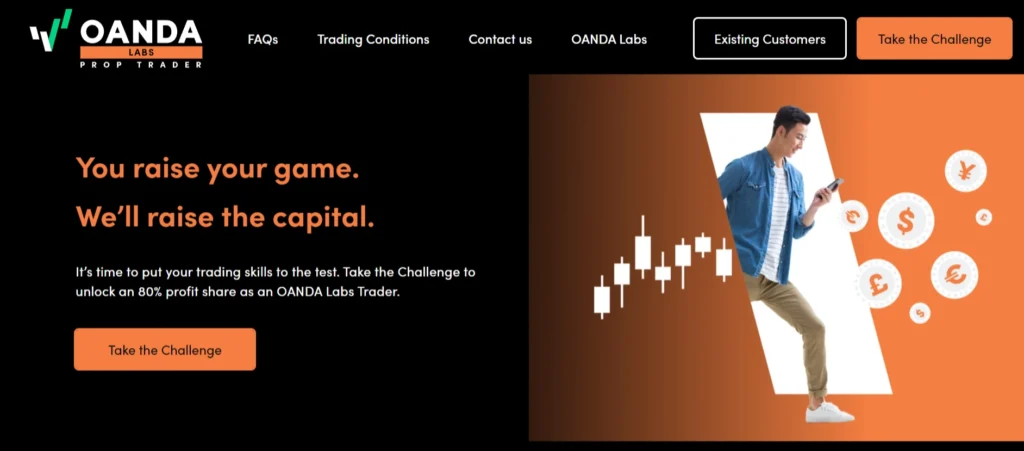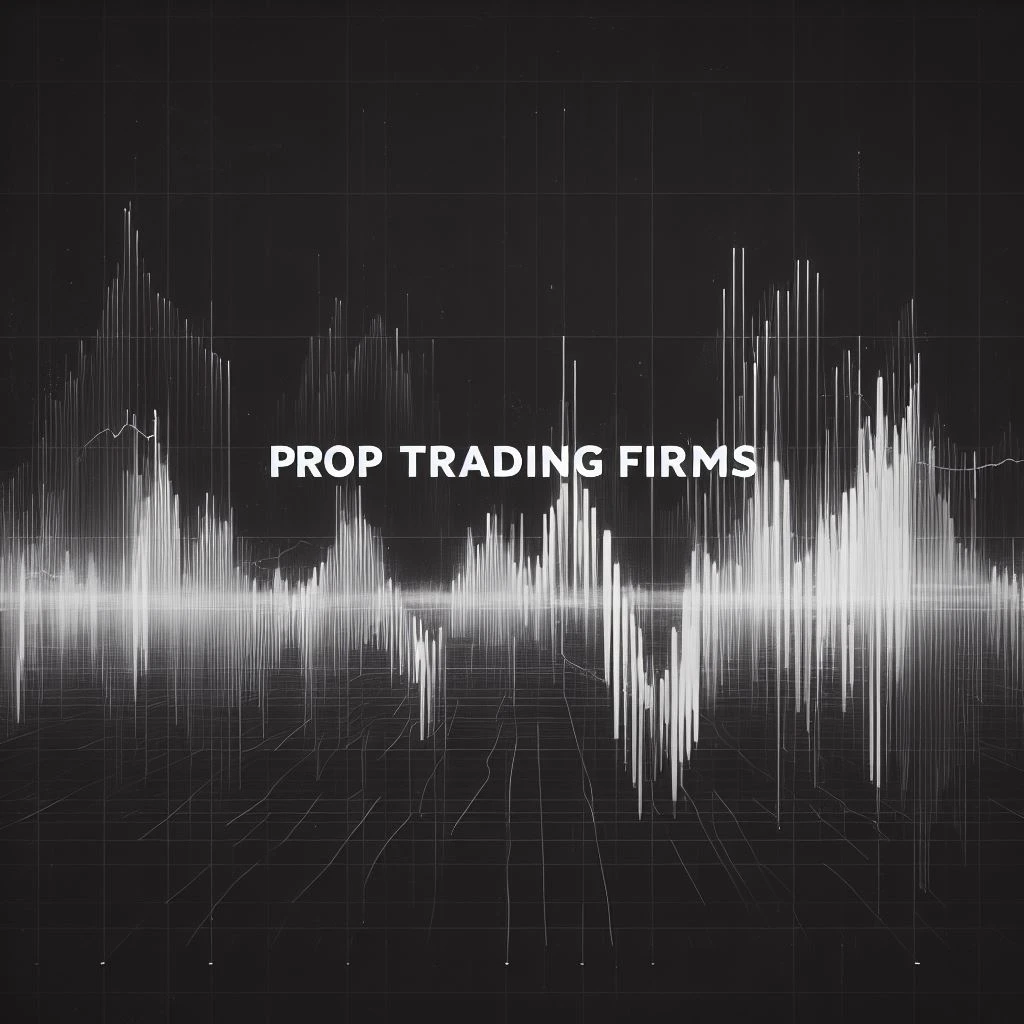The financial markets are witnessing a new challenger rise through the ranks – prop trading. Industry experts like Crystal Lok, Head of Emerging Markets at OANDA, believe prop trading has the potential to eclipse traditional forex (FX) and contracts for difference (CFD) trading. This surge in popularity can be attributed to several factors, making prop trading an attractive option for both aspiring and seasoned traders.

Accessibility: A Level Playing Field
Unlike traditional FX and CFD trading, prop trading offers a lower barrier to entry. Aspiring traders no longer need to amass significant sums of capital before they can begin their journey. Prop firms provide traders with the capital they need to trade, allowing them to focus on developing their skills and strategies without risking their own money. This significantly reduces the financial burden associated with entering the financial markets, making it a more accessible career path.
Reduced Risk: Learning the Ropes Without the Burn
The risk management aspect of prop trading is another major advantage. Since traders are utilizing the firm’s capital, their potential downside is limited. This allows them to experiment with different strategies, make calculated risks, and learn from their mistakes without facing the harsh consequences of losing their own money. This risk-mitigated environment fosters a valuable learning experience for new traders, allowing them to refine their skills before venturing into the world of self-funded trading.
Lucrative Potential: A Win-Win Situation
The prop trading business model offers a win-win scenario for both prop firms and skilled traders. When traders generate profits, the firm takes a predetermined percentage, creating a performance-based revenue stream. For successful traders, this translates to potentially high earnings without the need for a significant initial investment. This lucrative potential is attracting a growing number of participants, particularly in the ASEAN region where prop trading is experiencing a surge in popularity.
Catching the Eye of Big Players: A Sign of Maturation
The rapid growth of the prop trading industry hasn’t gone unnoticed by established players in the traditional FX and CFD space. Major financial institutions are starting to take note of the potential this sector holds and are exploring ways to integrate prop trading offerings into their existing services. This increased competition is likely to benefit traders in the long run, as it will drive innovation in technology, trading platforms, and educational resources.
The US Market: A Land of Opportunity with Regulatory Clouds
The US market, historically a lucrative space for prop trading, currently faces a period of uncertainty due to evolving regulations. This has caused some prop firms to shift their focus to other regions with clearer regulatory frameworks. While the US market offers immense potential, the regulatory landscape needs to solidify before it can reclaim its position as a leader in the prop trading space.
Regulations on the Horizon: Ensuring a Fair Playing Field
The current freewheeling nature of the prop trading industry might not last forever. As the industry matures and attracts more prominent players, regulations are likely to follow. This will hopefully prevent a repeat of the “wild west” era witnessed in the CFD brokerage industry, where some brokers masqueraded as educational institutions to bypass regulations. Prop firms operating under the guise of tech or software companies raise similar concerns. Establishing clear regulations will benefit the industry in the long run by ensuring fair play and protecting both traders and firms. Regulatory frameworks will also help to weed out unscrupulous practices and promote transparency within the industry.
The Future of Prop Trading: Collaboration and Innovation
With its accessibility, lower risk profile, and potentially high rewards, prop trading is well-positioned for continued growth. The influx of established players and potential regulatory changes will undoubtedly shape the future of this industry. However, one thing seems certain: collaboration and innovation will be key drivers of progress. Collaboration between established firms and prop trading companies can lead to the development of more sophisticated trading platforms, advanced educational resources, and robust risk management tools.
Challenges and Considerations
While prop trading offers a multitude of benefits, it’s important to acknowledge the challenges that come with it. Prop firms often require traders to pass stringent evaluation processes, such as trading challenges, before granting them access to capital. These challenges can be rigorous and require a significant amount of skill and discipline. Additionally, the fast-paced and competitive nature of prop trading can be stressful for some individuals.
A Catalyst for Change in Traditional Trading
The rise of prop trading could act as a catalyst for change in the traditional FX and CFD space. Increased competition may compel established brokers to re-evaluate their offerings, potentially leading to:
- More Competitive Fees and Spreads: Prop firms often offer tighter spreads and lower commissions to attract traders. Traditional brokers might need to adjust their pricing structures to remain competitive.
- Enhanced Technology and Education: The focus on innovation in prop trading could lead to the development of more advanced trading platforms, educational resources, and analytical tools. Traditional brokers may need to invest in similar advancements to retain their customer base.
- Improved Customer Service: As prop firms strive to attract and retain skilled traders, they may prioritize exceptional customer service. Traditional brokers might need to follow suit to ensure a positive customer experience.
A New Era of Collaboration?
There’s also the possibility of collaboration between established institutions and prop trading firms. This could lead to:
- Hybrid Trading Models: The emergence of hybrid models that combine the traditional brokerage experience with elements of prop trading, such as access to capital and educational resources.
- Risk-Sharing Arrangements: The development of risk-sharing arrangements where traders contribute a portion of the capital and share profits with the brokerage.
Uncertainty and the Regulatory Landscape
The future of prop trading remains somewhat uncertain, largely due to the evolving regulatory landscape. Clear and well-defined regulations are crucial for ensuring the industry’s long-term stability and fostering trust among participants. Regulatory bodies will need to strike a balance between encouraging innovation and protecting traders from unscrupulous practices.
Conclusion: Prop Trading – Reshaping the Financial Landscape
Prop trading is emerging as a disruptive force in the financial markets, with its accessibility, risk-mitigated environment, and potential for high rewards attracting a growing number of participants. Its rise could lead to a more competitive landscape in traditional FX and CFD trading, potentially benefitting traders with lower fees and advanced tools. Collaboration between established institutions and prop firms could further accelerate innovation in the future. However, the evolving regulatory landscape remains a key factor to watch. As regulations take shape, prop trading has the potential to become a mainstream force, reshaping how people access and participate in the financial markets. The future of prop trading promises to be interesting and full of possibilities.





